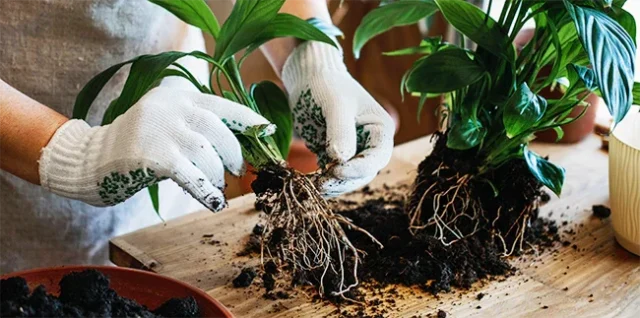Repotting is a crucial aspect of caring for your indoor plants. It involves transferring a plant from its current container to a larger one to provide more space for its roots to grow. While it might seem daunting at first, repotting is a relatively simple process that can be done with a little care and attention.
Choosing the Right Pot
The first step in repotting is to select the appropriate pot. Consider the following factors:
- Size: The new pot should be slightly larger than the current one to accommodate the plant’s roots. A general rule of thumb is to choose a pot that is 2-3 inches wider than the existing container.
- Material: Pots can be made from various materials, including terracotta, plastic, and ceramic. Each material has its own advantages and disadvantages. Terracotta pots are porous and allow excess moisture to evaporate, while plastic pots are lightweight and durable. Ceramic pots are often decorative but can be heavier and retain moisture.
- Drainage: Ensure the pot has drainage holes to allow excess water to escape. This helps prevent root rot and other problems.
Preparing the Soil
Before repotting, you’ll need to prepare the soil. A well-draining potting mix is ideal. You can purchase a pre-mixed potting mix or create your own by combining peat moss, perlite, and vermiculite.
Removing the Plant from the Old Pot
Gently loosen the soil around the plant’s base using a fork or your fingers. Carefully tilt the pot and slide the plant out. Be cautious not to damage the roots.
Inspecting the Roots
Once the plant is removed, take a moment to inspect its roots. If the roots are circling around the bottom of the pot, it’s a sign that the plant is rootbound and needs to be repotted. Carefully untangle any tightly wound roots.
Repotting the Plant
Place a layer of potting mix in the bottom of the new pot. Carefully place the plant in the center and fill in the gaps with more soil. Press the soil firmly around the base of the plant to ensure it’s securely in place. Water the plant thoroughly after repotting.
Tips for Success
- Timing: Repotting is best done during the plant’s growing season, typically spring or early summer.
- Gentleness: Handle the plant with care to avoid damaging the roots.
- Drainage: Ensure the pot has drainage holes and avoid overwatering.
- Fertilizing: After repotting, you can fertilize the plant to promote healthy growth.
By following these steps and taking your time, you can successfully repot your plants and ensure their continued health and vitality.

























